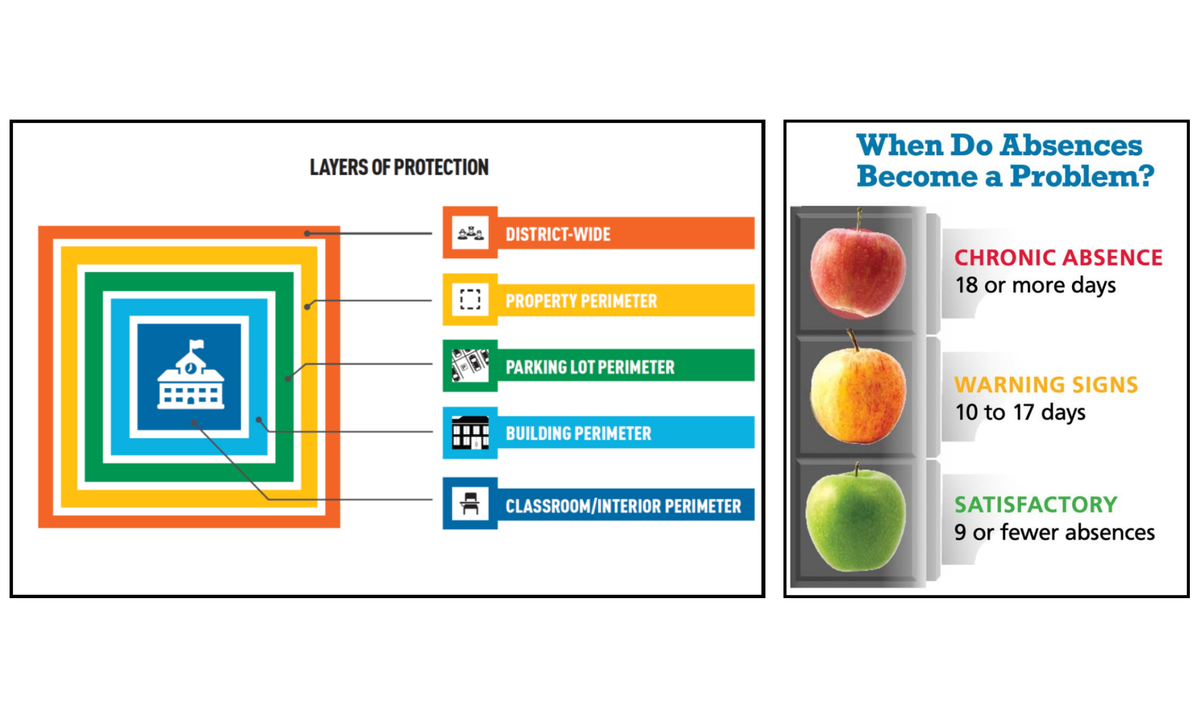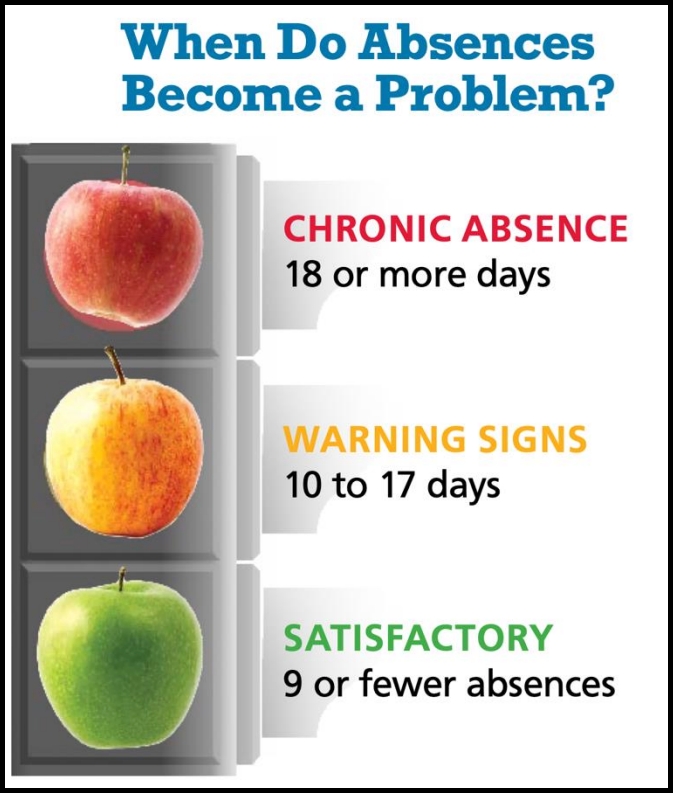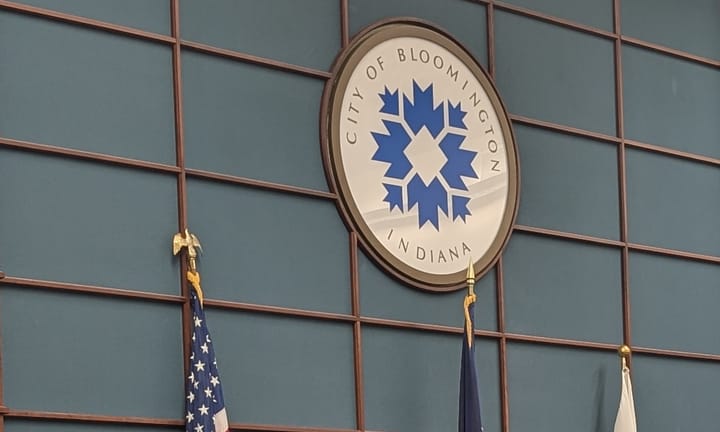MCCSC board hears updates on student attendance, health and safety
Health and safety, along with school attendance, were topics presented to Monroe County Community School Corporation (MCCSC) Board of School Trustees at its regular meeting on Tuesday (Sept. 23). The board also held a hearing on its budget for 2026, and approved several routine bond resolutions.



Left: Graphic from MCCSC's presentation on school safety. Right: Graphic from MCCSC's presentation on attendance.
Health and safety, along with school attendance, were topics presented to Monroe County Community School Corporation (MCCSC) Board of School Trustees at its regular meeting on Tuesday (Sept. 23).
The board also held a hearing on its budget for 2026, and approved several routine bond resolutions. Last month, the school board authorized the district to advertise proposed spending for the 2026-2027 school year, which is set at no more than $181,004,367 across all funds. The board’s vote on the adoption of the 2026 budget is set for Oct. 28.
School attendance
The school board received an update about school attendance across the district from MCCSC assistant superintendent for curriculum and instruction Alexis Harmon. The presentation included the importance of attendance, the harms of absence, an overview of the district’s attendance policy, relevant state legislation, and support systems for addressing students with poor attendance.
Harmon told the board, “As a school, we commit to making sure we have good attendance records so that both us and families can make sure that they stay on top of that.” She continued, “Of course, there are times when students need to be absent for very good reasons.” Acceptable excused absences include illness, recovery from an accident, professional appointments, college visits, religious holidays, special education accommodations, out-of-school suspensions, and bereavement.
Not a focus in the report to the board was MCCSC’s recent attendance data. According to the numbers from IDOE, for the 7-year span of pre-pandemic years from 2013 through 2019, the district’s chronic absenteeism rate was steady at around 10%. In the first post-pandemic year of 2020-2021, the district’s rate jumped to around 15%, and climbed to a peak of 21.4% in 2022-23 before dropping to 17.7% in the 2024-25 school year.
Chronic absenteeism is defined as missing 10 percent or more of the school year—at least 18 days in a standard 180-day year—including both excused and unexcused absences. Many districts across the state show a similar trend of pre- and post-pandemic chronic absenteeism.

Included in Harmon’s presentation was new Indiana legislation—SEA 282 in 2024, and SEA 482 in 2025. Both of those bills changed what schools are required to do when students are chronically absent. The legislation requires schools to notify parents in writing, implement “truancy prevention measures,” hold a meeting with the student and a parent or guardian, and create a plan to improve attendance, if a student has five unexcused absences in a 10-week period.
After 10 unexcused absences, the school has to notify the prosecutor’s office in addition making another written notification to parents.
Harmon stressed that the new legislation impacts only unexcused absences, not excused absences, for reasons like illness.
Board vice president Erin Cooperman commented that the state legislation “does seem like a conscious choice to pursue [absenteeism] as a crime instead of going through [the Department of Child Services].”
Attendance information, in the form of how many students attend which schools, is central to the work of MCCSC’s Redistricting Study Commission. In April of this year, MCCSC formed the 92-person commission in response to a February 2024 school board resolution about studying redistricting.
The board charged the commission to study redistricting options with two priority goals: balancing student socio-economic status among the schools and ensuring cost-effectiveness. Since then, commission members have been identifying factors for evaluating new catchment areas and evaluating potential map scenarios. At the commission’s most recent meeting last week on Sept. 17, commission member and Monroe County GIS Coordinator John Baeten demonstrated a data dashboard that combines county assessor data and American Community Survey data on a map with current attendance zones.
The commission’s work includes assessing the utilization of each school: the ratio of students to building square footage. In November 2024, demographer Preston Smith of Business Information Services told the board that the district has “incredibly low utilization.” He said that the average utilization for the elementary schools is 74%, “which is really low.” He projected that in 2035, with no change to attendance zones or buildings, the district’s declining enrollment, the utilization rate will be 68%.
Health and safety
The board also received an update about health and safety from assistant superintendent Harmon and director of school safety Eric Gilpin. Harmon covered physical education, nutrition, health services, and social-emotional and behavioral health. One highlight from Harmon: MCCSC was the only school corporation in Indiana to win a gold rating from the USDA’s “Turnip the Beet!” High Quality Summer Meals Award Program for its food service over the summer. Harmon said MCCSC’s child nutrition department served over 10,000 meals.
Harmon reported that MCCSC increased its number of registered nurses (RNs) from 11 to 13 this year. “Ultimately, this means improved student-to-RN ratio,” Harmon said.
Based on the Indiana Department of Local Government Finance’s compensation database platform, total compensation for MCCSC employees with the title “nurse” in 2024 was $623,119.66.
Part of Harmon’s presentation spotlighted the district’s partnership with several local partners, including Indiana University (IU) Health. At the end of this calendar year, IU Health is ending its 60-year arrangement with Monroe County’s health department.
After the presentation, board vice president Cooperman asked Harmon: “Do you know if that’s going to hinder our ability to offer things like vaccine clinics?” Harmon responded, “I think we don’t have specifics on that, but I think that we still have a strong partnership with IU Health through our coordinator of school health, and so we’re in discussion with her to ensure that a lot of those things would try to not be disrupted.”
Gilpin, director of school safety, outlined the district’s safety practices, including locked exterior and interior doors, employee and visitor badges, and digital student pass systems. According to Gilpin, the protocols follow national guidelines and the Partner Alliance for Safer Schools framework.
[Editor’s note: The reporter, Kelton O’Connell, is a member of the Redistricting Study Commission, whose work is described in the article.]




Comments ()